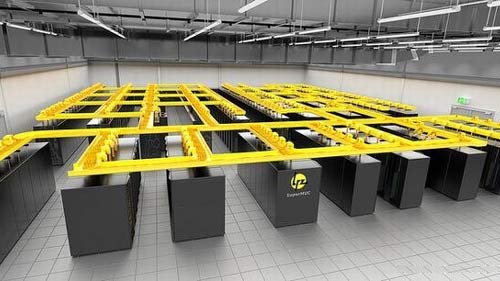
Technology has provided us with the ability to live in a world full of instant information. What we have access to now at the tap of a finger, once took a world of libraries to provide. And how does technology consistently make our lives easier? By processing LOADS of information. But where does all that information come from? What are its uses, and what is required to manage it? Here is where high-performance computing systems come in.
What is High-Performance Computing?
High-performance computing (HPC) is the process of receiving, processing, and storing vast quantities of information within seconds to minutes versus what would once take days or weeks. It leverages and distributes resources to solve complex problems with large datasets. W are not talking about your typical spreadsheet, we mean HUGE datasets like petabytes to zettabytes. These computers are used for tons of different things like astrophysics, technology, artificial intelligence, cyber security, finance, and even weather tracking. For example, a self-driving car uses over 4,000 gigs of information each day. If we compare that with your average American using just 34 gigs of data every day, it’s obvious that we need something with a little more processing power to keep us going.
How does an HPC Data Analytics Process work?
The HPC process takes data that is either gathered by the machine or provided to it and it inspects, cleans, transforms, and models it to discover useful information and create conclusions/decisions based on what it finds. Essentially, the process is broken down into 6 steps:
- Defining the Questions
- Ingesting and Storing the Available Data
- Cleaning, Preparing and Combining Data
- Performing Analysis and Building Models
- Understanding and Considering the Insights
- Taking Action & Making Decisions Based on Findings
Where is all the data stored?
With all this processed data, there needs to be a place that stores it. Typically this is done in two different ways.
The first is a data lake. Data lakes store raw data in its native format using flat file architecture. Examples of data lakes are:
- Web
- Sensors
- Logs
- Social Media
- Images
The second (and much more complex) way to store information is using a data warehouse. This is a storage repository for a huge amount of data in table formats. This system uses files and folders to structure and store information for quick and easy retrieval. Data warehouses are where you’ll find the information that needs HPC to process.
The Take Home
With the consistent rise of technology, there is a huge demand for processing information. HPC is a network of systems and tools that we use to help achieve that demand in as little as real-time. So, next time your Tesla parks itself or you just proved your partner wrong with a quick Google search, you can thank HPC for providing you with that capability.




